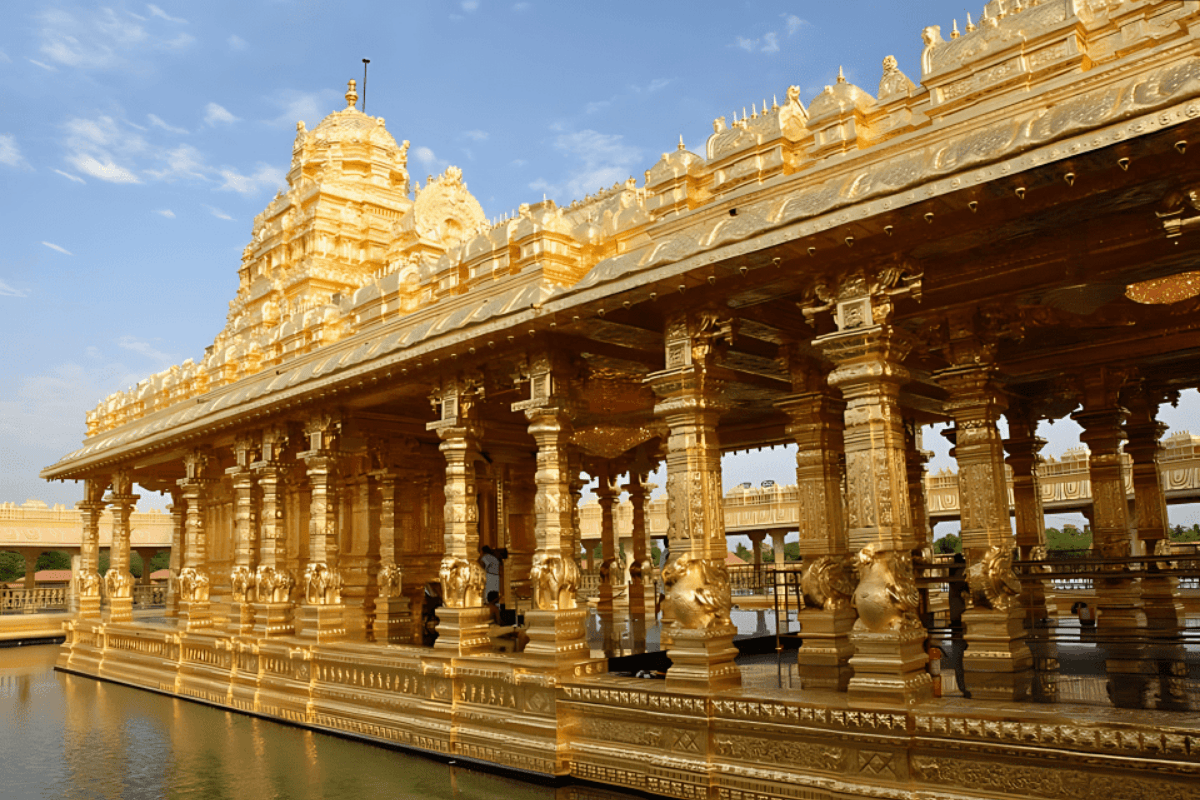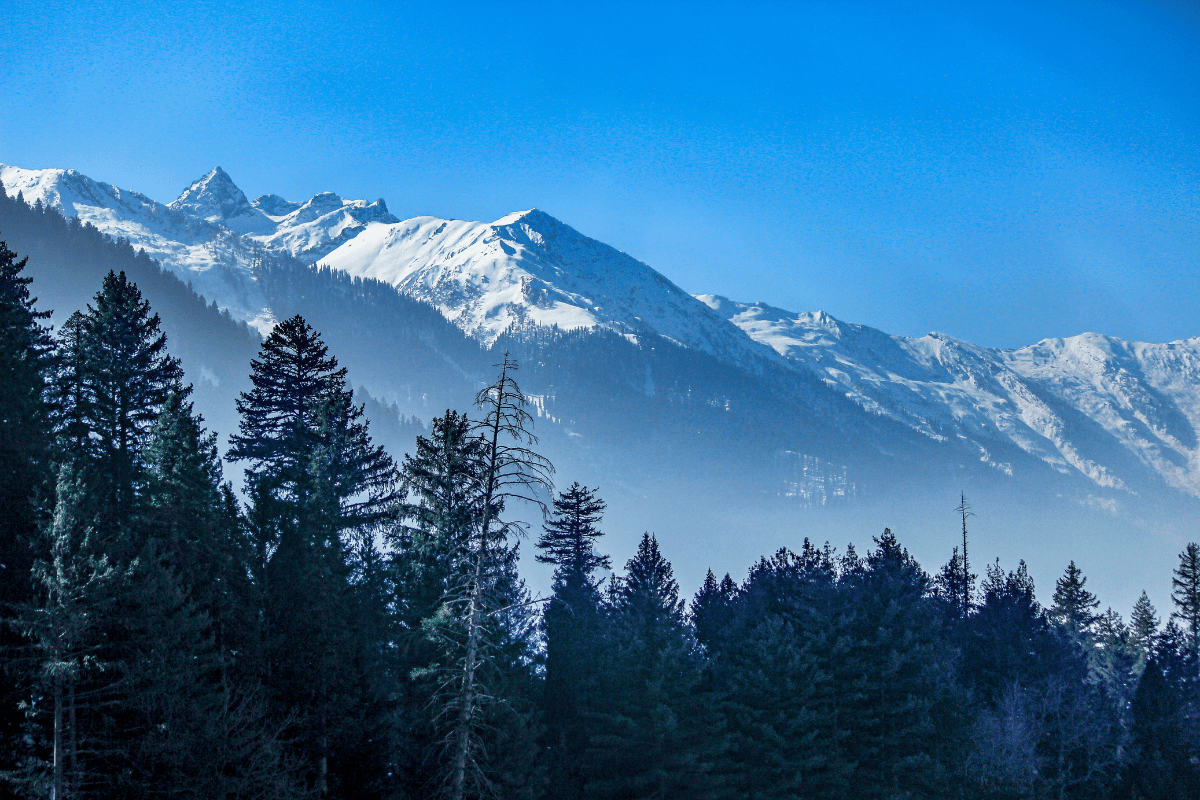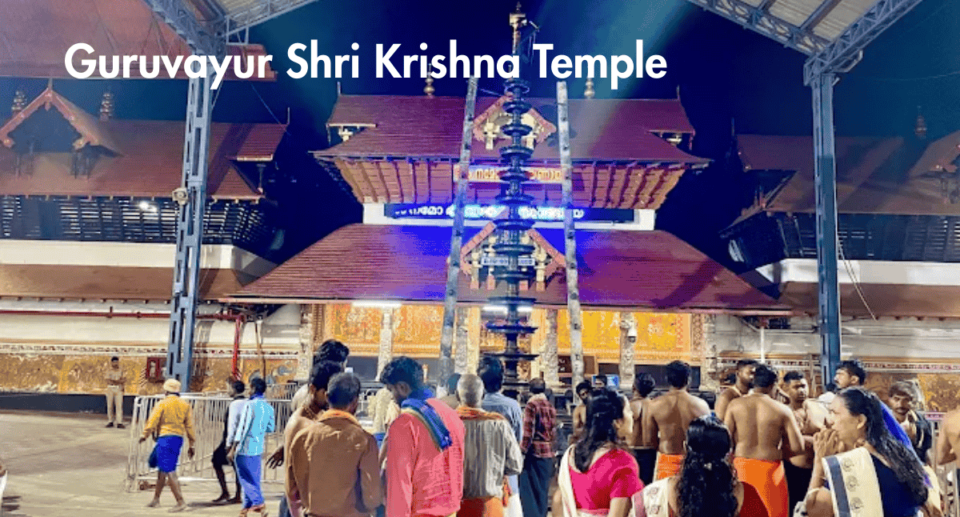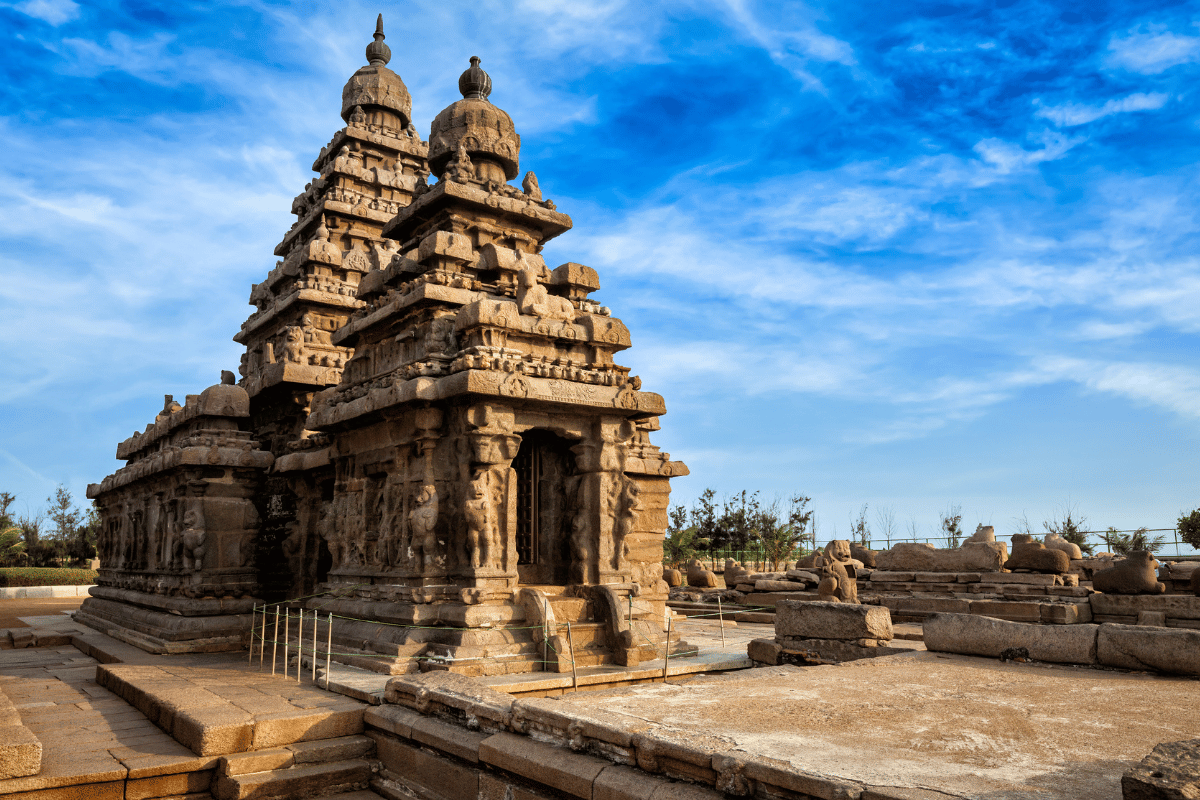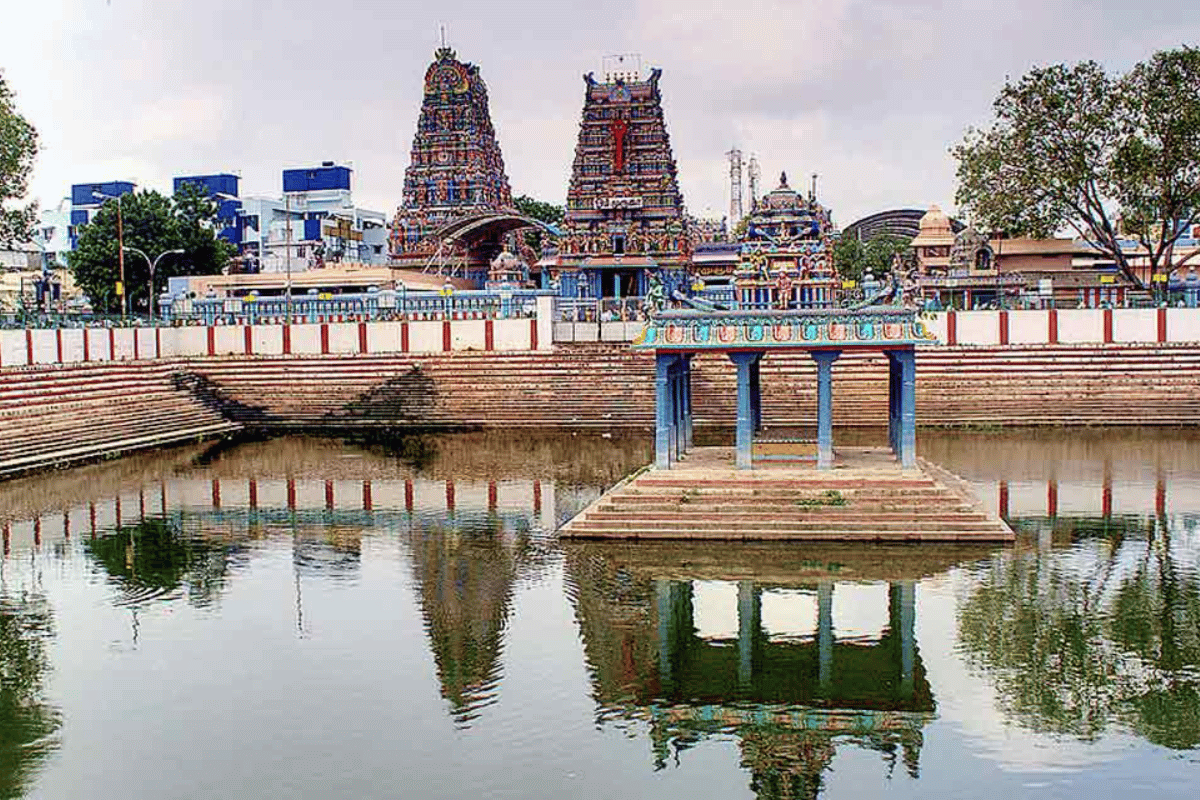Sabarimala Temple Guide – Everything You Need to Know Before Visiting

Sabarimala Temple, located in the thick forests of the Western Ghats in Kerala’s Pathanamthitta district, is one of the most sacred and famous pilgrimage places in South India. Every year, lakhs of devotees visit this holy temple of Lord Ayyappa with deep faith, especially during the Mandala season and Makaravilakku.
This temple is not just about devotion – it’s a journey of self-purification, discipline, and spiritual awakening. Pilgrims follow a 41-day vrat (penance) before taking the tough forest path to reach the hill shrine.
Table of Contents
History of Sabarimala Temple
The history of Sabarimala Temple is connected to Lord Ayyappa, believed to be the son of Lord Shiva and Mohini (a form of Lord Vishnu). It is said that the temple was built by King Rajasekhara of the Pandalam dynasty, who raised Lord Ayyappa as his son.
The present temple was rebuilt in the 1950s after it was destroyed in a fire, but the original temple structure is believed to be thousands of years old. The temple is located at an altitude of around 4,133 feet above sea level in the Periyar Tiger Reserve. It is surrounded by lush green forests and mountains, giving it a peaceful and divine vibe.
What is Sabarimala Temple Famous For?
Sabarimala is famous for:
- Lord Ayyappa’s Worship: It is the main temple dedicated to Lord Ayyappa, also called Dharma Shasta.
- 18 Sacred Steps (Pathinettam Padi): Devotees climb these 18 steps with ghee-filled coconut (Irumudi) as an offering.
- Strict Traditions: Devotees must follow 41 days of vratam, wear black or blue clothes, avoid non-veg food, alcohol, and practice celibacy.
- Massive Pilgrimage: It is one of the largest annual pilgrimages in the world with over 50 million devotees visiting every year.
- Equality in Devotion: Regardless of caste, creed, or social status – all devotees are treated equally here. Everyone is called “Swami” or “Ayyappa” out of respect.
Why Women Are Not Allowed in Sabarimala Temple?
Women between the ages of 10 and 50 years (menstruating age) are not allowed to enter the Sabarimala Temple, and here’s the reason in simple terms:
Sabarimala Temple is dedicated to Lord Ayyappa, who is considered a Naishtika Brahmachari (a strict celibate). According to the temple tradition and belief, Ayyappa does not want to be disturbed by any thoughts of romance or attachment. So, to respect the celibate vow of the deity, women of reproductive age are traditionally restricted.
This rule is based on faith, belief, and old customs, not on gender discrimination.
Note: This is a religious belief, and the matter has also been under discussion in courts and society in recent years.
Makaravilakku Festival – A Grand Celebration at Sabarimala
Makaravilakku is one of the most important and sacred festivals celebrated at Sabarimala Temple, Kerala. It happens every year on Makara Sankranti, usually around January 14th. Lakhs of devotees from across India come to Sabarimala to witness this divine event.
Makaravilakku and Lord Ram Connection
The Makaravilakku festival at Sabarimala is deeply connected with Lord Ayyappa, but many people don’t know that there’s also a spiritual connection with Lord Ram.
According to legend and beliefs, Lord Ayyappa is considered to be Harihara Putra – the son of Lord Vishnu (in Mohini form) and Lord Shiva. But there’s also a connection with Lord Ram’s journey in the Ramayana.
When Lord Ram was in search of Sita, he passed through many forests and holy places. It is believed by some traditions that Ram and Lakshman reached Sabarimala area during their journey and prayed at the hill, where later the Ayyappa temple was built.
Makaravilakku and Makara Jyoti
The Makaravilakku flame, which appears on Makara Sankranti, is considered a divine signal. Many believe it is also connected to the moment when Lord Ram and Lord Ayyappa’s energies unite in a spiritual way. It is said to represent the divine blessings of both Lord Ram (as dharma) and Ayyappa (as protector of dharma).
Also, the 18 holy steps (Pathinettam Padi) of Sabarimala have spiritual meanings. Many devotees believe they represent the steps to reach God, just like the 18 chapters of the Bhagavad Gita, where Lord Krishna (an avatar of Vishnu) guides Arjuna — again linking back to Ram’s dharmic path.
What is Makaravilakku?
Makaravilakku is a symbolic light or flame that appears on the Ponnambalamedu hill, near the Sabarimala temple. This light is seen after the Deeparadhana (evening aarti) on Makara Sankranti day when the deity Lord Ayyappa’s idol is adorned with holy jewels called ‘Thiruvabharanam’.
As soon as this divine flame is seen, devotees chant loudly “Swamiye Saranam Ayyappa,” believing it to be a sacred sign of Ayyappa’s blessings.
Sabarimala Temple Opening Date & Timing 2025:
Here are the main dates for temple opening and closing in 2025 (as per the official Ayyappa Temple Calendar):
| Occasion | Opening Date | Closing Date |
|---|---|---|
| Makaravilakku Festival | Jan 14, 2025 | Jan 20, 2025 |
| Monthly Pooja – Kumbham | Feb 13, 2025 | Feb 18, 2025 |
| Monthly Pooja – Meenam | Mar 14, 2025 | Mar 19, 2025 |
| Vishu Festival | Apr 14, 2025 | Apr 19, 2025 |
| Monthly Pooja – Medam | Apr 14, 2025 | Apr 19, 2025 |
| Monthly Pooja – Edavam | May 14, 2025 | May 19, 2025 |
| Monthly Pooja – Midhunam | Jun 14, 2025 | Jun 19, 2025 |
| Monthly Pooja – Karkidakam | Jul 16, 2025 | Jul 21, 2025 |
| Monthly Pooja – Chingam | Aug 16, 2025 | Aug 21, 2025 |
| Monthly Pooja – Kanni | Sep 16, 2025 | Sep 21, 2025 |
| Mandala Pooja Start | Nov 16, 2025 | Dec 26, 2025 |
| Makaravilakku & Season End | Dec 30, 2025 | Jan 20, 2026 |
Temple Timing:
- Morning: 4:00 AM – 11:00 AM
- Evening: 5:00 PM – 10:00 PM (Timings may vary during festival days)
Morning and Evening Pooja timings at Sabarimala
Devotees visiting the Sabarimala Temple can attend various daily poojas starting from early morning till night. Below is the schedule of Morning and Evening Poojas at Sabarimala:
Morning Pooja Timing
| Time | Pooja / Activity |
|---|---|
| 3:00 AM | Opening of Sanctum Sanctorum, Nirmalyam, Abhishekam |
| 3:30 AM | Ganapati Homam |
| 3:30 AM – 7:00 AM | Neyyabhishekam (Ghee offering to Lord Ayyappa) |
| From 7:30 AM | Usha Pooja (Morning prayers) |
| 8:30 AM – 11:00 AM | Neyyabhishekam continues |
| 11:00 AM – 11:30 AM | Ashtabhishekam (15 types of abhishekams) |
| 12:30 PM | Ucha Pooja (Noon prayers) |
| 1:00 PM | Closing of Sanctum Sanctorum |
Evening Pooja Timings
| Time | Pooja / Activity |
|---|---|
| 3:00 PM | Opening of Sanctum Sanctorum |
| 6:30 PM | Deeparadhana (Lighting ceremony) |
| 7:00 PM – 9:30 PM | Pushpabhishekam (Flower offering) |
| From 9:30 PM | Athazhappooja (Dinner offering to deity) |
| 11:00 PM | Harivarasanam (Lullaby sung before closing the temple) |
From early morning until late night, the temple stays alive with holy chants, poojas, and offerings. Having this pooja timing information will help you plan your darshan conveniently and spiritually.
FAQs about Sabarimala Temple
1. What is the dress code for Sabarimala Darshan?
Men should wear black or blue dhoti (no shirt). Women above 50 years or below 10 years are allowed and can wear traditional Indian attire like saree or salwar kameez.
2. Can husband go to Sabarimala when wife is pregnant?
Yes, a husband can visit Sabarimala. But many couples avoid travel due to religious sentiments or physical reasons. There is no strict rule against it.
3. Who are not allowed in Sabarimala?
Women aged between 10 to 50 years (i.e. of menstruating age) are not allowed to enter the Sabarimala Temple as per traditional customs.
4. Which God is present in Sabarimala?
The temple is dedicated to Lord Ayyappa, also called Manikanta Swami – believed to be the son of Lord Shiva and Mohini.
5. Why does Ayyappa have 18 steps?
The 18 sacred steps (Pathinettam Padi) represent various meanings – the first 5 for the human senses, the next 8 for emotions, 3 for gunas (Sattva, Rajas, Tamas), and the final 2 for knowledge and bliss. Only those carrying the Irumudi Kettu (sacred offering bundle) can climb these steps.
Final Words:
Sabarimala is not just a place – it is a journey of faith, self-discipline, and devotion. Whether you are going for the first time or the tenth, each visit feels divine. The atmosphere in the forest hill, chants of “Swamiye Saranam Ayyappa”, and the brotherhood among pilgrims make it a once-in-a-lifetime spiritual experience.
Plan your visit during the main pooja seasons, follow the rituals sincerely, and respect the temple traditions to truly feel the grace of Lord Ayyappa.

